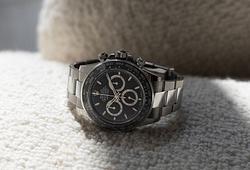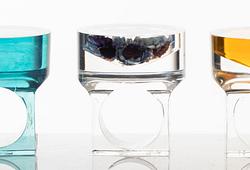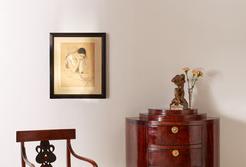Leander Engström
Norweigan coast
Signed Leander Engström. Executed around 1918. Watercolor 73 x 52 cm.
Provenance
A-B. Svensk Franska Konstgalleriet, Stockholm.
Dr Hildebrand.
Stockholms auktionsverk, Moderna Kvaliten, 6 November, 2003, lot no 850.
The collection of Sven and Maudie Olerud.
Literature
Nils Palmgren, "Leander Engström", 1939, illustrated in black and white p. 75.
More information
In 1908 Isaac Grünewald convinced Leander Engtröm to go to Paris to study the new modern avantgarde art. Although Engström was deeply inspired by this artistic movement in France, he was homesick and longed for his home in northern Sweden.
When Engström had an exhibition in Kristiania, Norway in 1916 he was very well received by the Norwegian critics. The same year he exhibited together with his friends Isaac Grünewald and Einar Jolin at Liljevalch’s konsthall in Stockholm. The following years are counted as the peak of the artist’s nordic oeuvre. His colour palette in blond nuances shows his brilliant sence of colours. In a very bold way he depicts the mountains in Lapland and the areas around Lofoten in a very expressionistic manner where the love for his masters Matisse and Gauguin are clearly visible.
Artist
Per leander Engström was a Swedish visual artist born in Ytterhogdal. He studied under the tutorship of Henri Matisse in Paris and the artists association school in Stockholm. Engström was part of the artistic group De Unga together with none other than Isaac Grünewald and Tor Bjurström. Engström was greatly inspired by Paul Gauguin, Vincent van Gogh and Paul Cézanne. Leander Engström followed in Osslund's footsteps and was captivated by Lapland's overwhelming natural scenery, which he depicted using the forms and colors of Fauvism. His paintings from 1912-15 - landscapes, still lifes, nude scenes - are harmonious and emotional, built upon Cézannes principles of discrete, weak colours. The years between 1916 and 1919 kan be understood as his most expressionistic period. Sweeping lines, large stylised planes and bright strong colours dominated his characteristic style. Engström found himself in Italy between 1920 and 1922 where he studied the early Rennaissance; it was during this time that he neared new objectivity. Leander Engström was one of Matisse's most impressive pupils.
Read more





















































